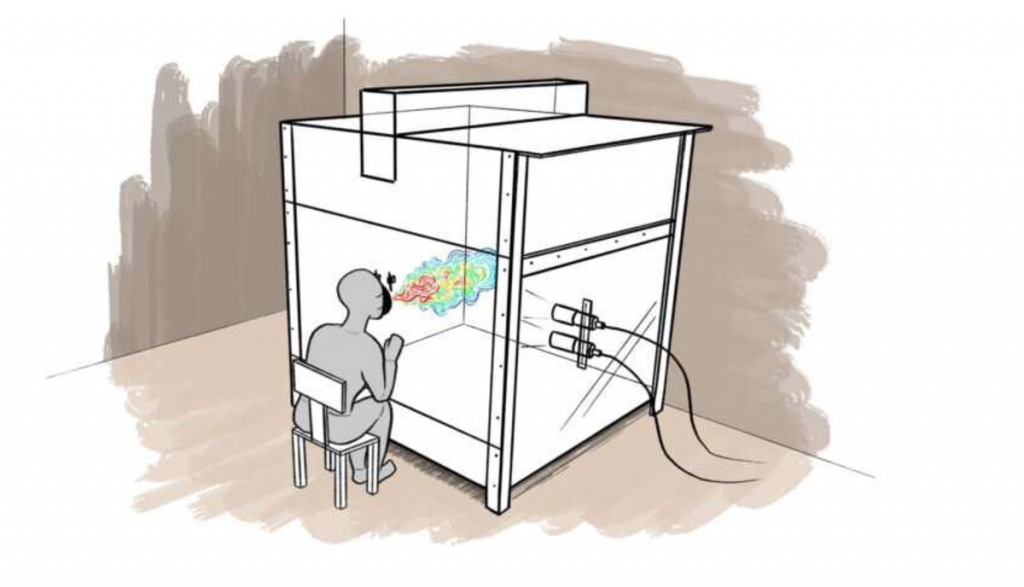In the “cough chamber” showed how quickly the coronavirus flies
An international team of scientists conducted an unusual experiment in which it was shown how the cough particles that contain the coronavirus spread rapidly indoors. For this, the researchers created a special camera in which it was possible to track the movement of COVID-19.
This experiment helped not only to find out the air velocity with virus particles, but also to find out the trajectory of such movements. The first results of the experiment show that two meters is not enough distance during a pandemic, the researchers say.
Even when you are at a distance of two and a half meters, the air flow with virus particles can move at a speed of 200 mm per second, which means that you will not have time to hide from infection.

The study showed that as many as 10% of small drops from a cough remain suspended in the air even four seconds after a cough. That is why doctors advise to cover your mouth while sneezing or coughing.
It is worth noting that you do not need to cover your mouth with your hands, because you will spread the infection to the door handles and other objects surrounding you. The best way is to cough in your elbow or disposable shawl. In any case, hands should be sanitized after this.
During the study, scientists decided to find out what will happen if you do not hide behind your hands during coughing and sneezing. To do this, specialists used the “cough chamber”, created in 2018.
With the help of it, 77 experiments have already been carried out, including trials in which flu-like diseases were checked. Therefore, scientists decided that it is suitable for testing coronavirus.
The cough chamber was a specially designed two-meter closed cube with a hole from where the participants cough. A high-speed camera and a laser beam are installed in the box to determine the velocity of the ejected particles.
Experimenters traced the movement of small particles as air moved. At the peak speed observed in the center of the cough jet, the speed was 1.2 meters per second. Scientists believe there is no real logical reason to say that two meters are somehow safe, but it is much better than one meter or shorter distances.
But do not forget that even two or three meters do not remove the risk of contracting 100%, therefore, during a pandemic, we strongly recommend not visiting public places without special need, the scientists concluded.










